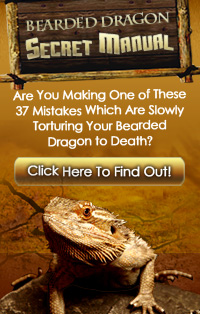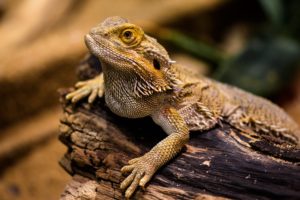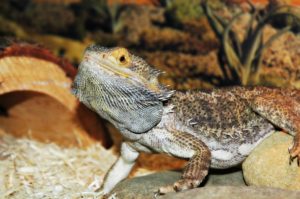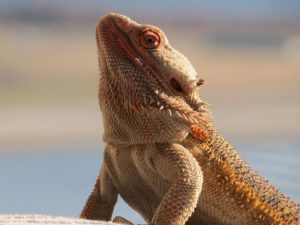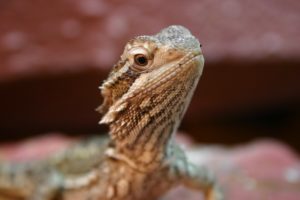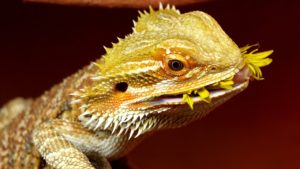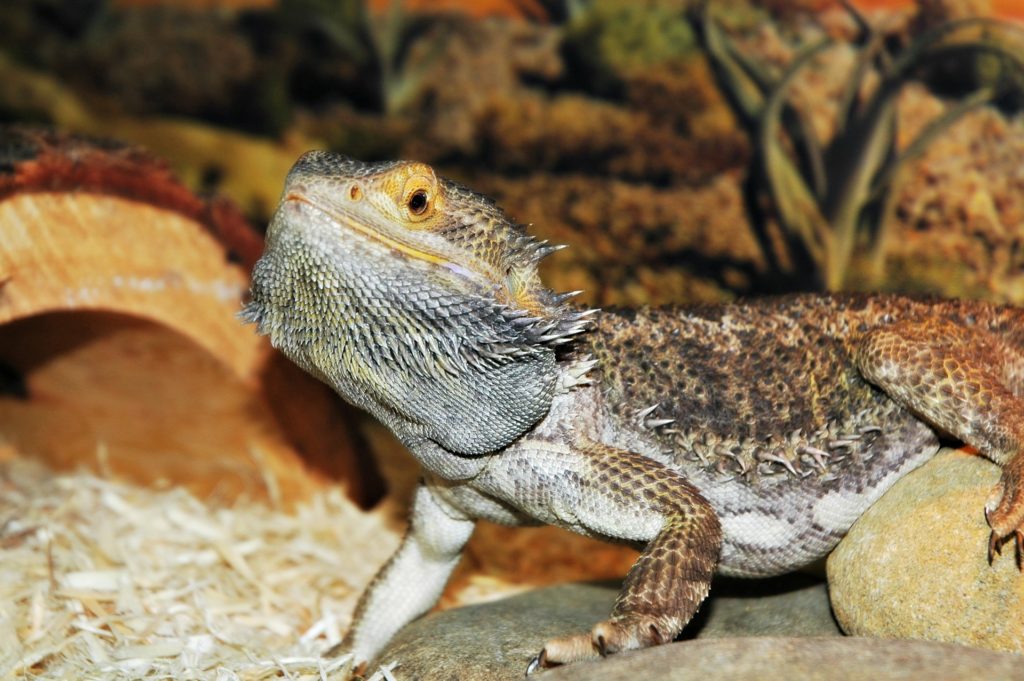
If you have or would like to get a bearded dragon, then you need to know a few basic tips that will help you take good care of your pet.
Bearded dragons are considered to be good pets for most people, even for those who have no previous experience of keeping reptiles.
FREE BEARDED DRAGON CARE SHEET
Choosing Your Pet
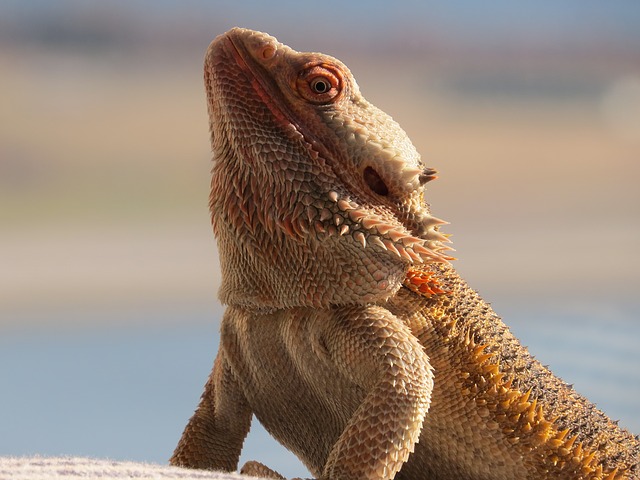
Before you buy a dragon, make sure you examine it carefully at the pet store (Buy Bearded Dragons at Petco) or breeder’s place. Active dragons make the best pets because as soon as you step close to them, they look at you with bright and alert eyes. Such pets like to spend time with the owners and you would surely like to have more fun with your new companion.
The dragon you decide to buy should not have any injuries, deformities, burns or sores and should be perfectly clean with no signs of pus. Try not to buy bearded dragons that are smaller than 6 inches as they are very delicate and more prone to get ill.
Providing the Perfect Enclosure

Before you bring your pet home make sure you have the right enclosure with the right heat, light and temperature arrangements. Although dragons can live in small spaces, it is better you give them a large space to play and move around. This will help dragons grow healthy.
Your pets need enclosures that have proper air circulation and humidity control settings. Bearded dragons are reptiles so they like to remain dry and love warm climates. There are plenty of bulbs and heating elements available in the market that will help you maintain a perfect habitat for your desert lover.
These friendly lizards love to play around so having substrates (material at the bottom of the enclosure) is also not a bad idea.
Giving the Right Diet
Feeding your dragon correctly is very important as an improper diet can affect your pet’s growth and may produce illness. Try to feed your pet with food that is clean and nutritious.
You can find out a comprehensive list of vegetables, insects, fruits and other food items that can be given to your pet in “Bearded Dragon Secret Manual”, available at www.beardeddragonsecretmanual.com. You should also offer clean water to your pet by placing a shallow bowl in the enclosure.
Cleaning your Pet
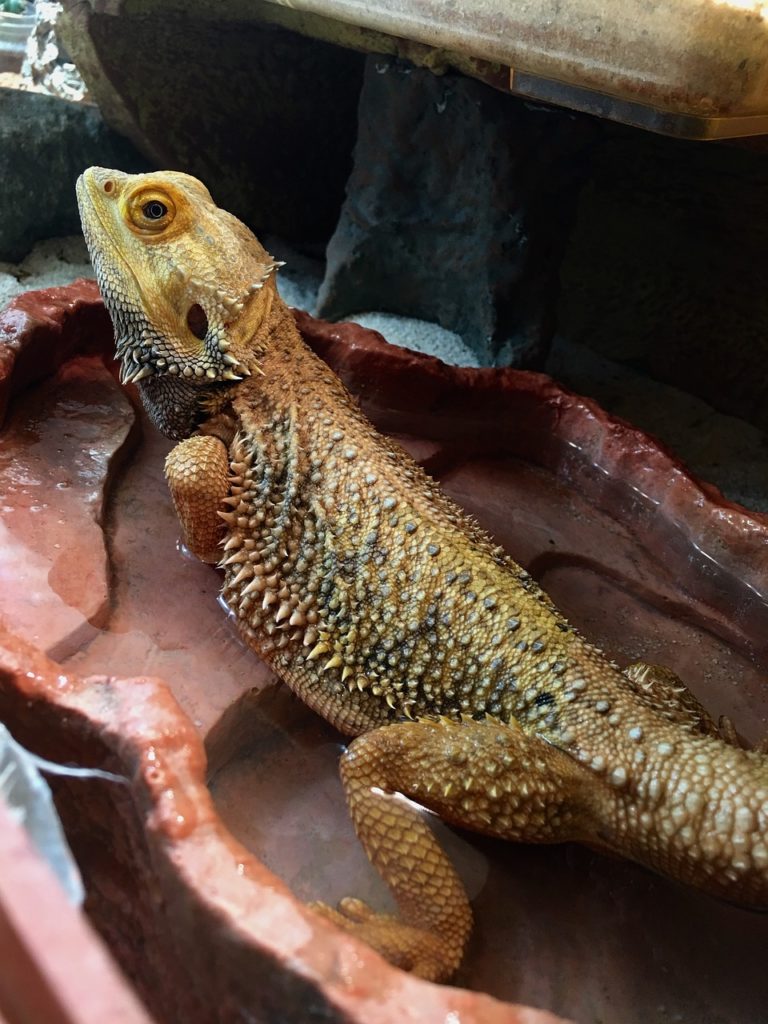
Pets need to be kept neat and clean therefore you can bathe your “beardie” once a week using warm but not hot water. (Check the temperature before you place your beardie in the tub to prevent injury).
The water level should be about chest high or half way through your pet’s front arms. You should never leave your pet unattended in the tub.
Once you feel you can provide basic care for a bearded dragon, you can ultimately bring it home to have loads of fun everyday.
Feeding Bearded Dragons
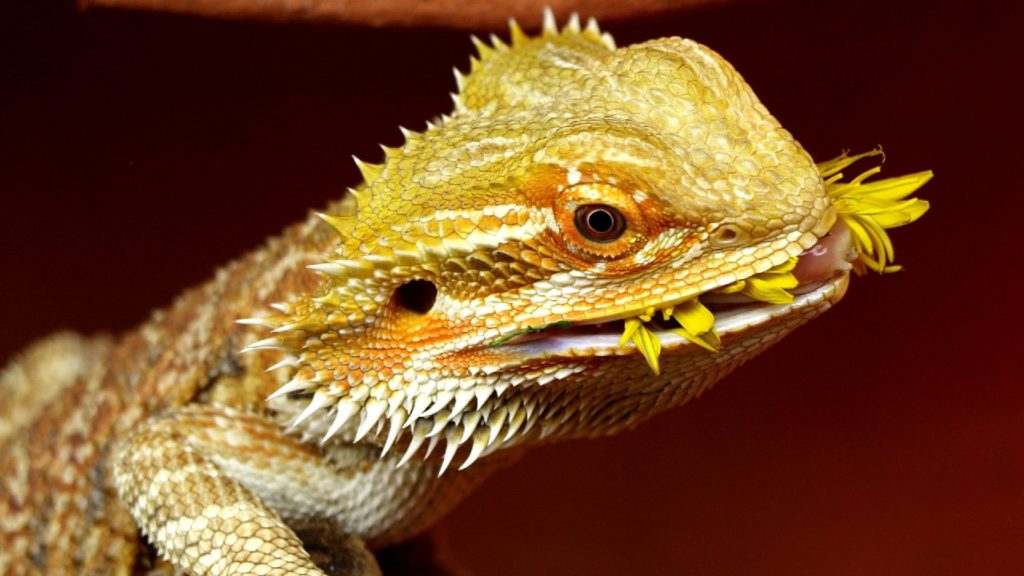
Bringing home a pet also brings along a lot of responsibilities and feeding your bearded dragon is a part of it. You need to be familiar with the feeding habits of your newly bought reptile especially when your pet is young and growing.
You will be pleased to know that your pet is an omnivore which means that it needs a right balance of animal and plant material. If you don’t take care of what and how you feed your pet, your pet can suffer horribly which is definitely something you will never wish to happen.
Feeding Baby/Juvenile Dragons
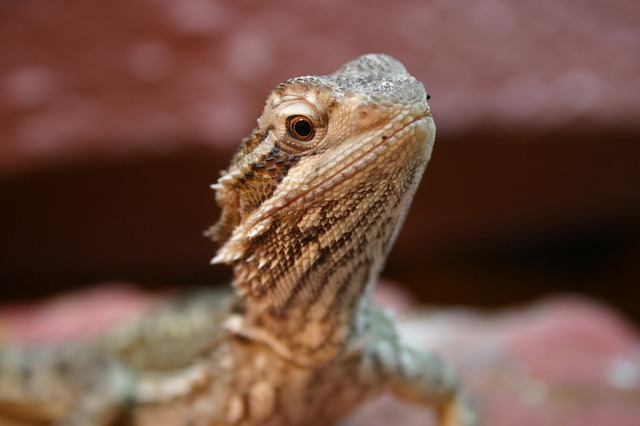
An important fact you need to keep to keep in mind that juvenile dragons are very curious and like to taste everything that comes within their reach. Therefore, it is important that during the early growth phase you keep a strict eye on your pet watching every movement closely. It is also recommended that you select enclosure substrates cautiously, avoiding items that contain loose particles which could hinder intestines of a baby dragon.
Food particles given to a baby dragon or even an adult dragon should not be large. The best size for your bearded dragons is a food particle which is smaller than the space between their eyes. Large particles can cause considerable damage to your pet.
Feeding plan for a baby dragon (up to 12 weeks) should be started off with number of insects’ everyday. You can also opt for “calcium dusted” insects at least four times a week. Excellent insect sources include crickets, cockroaches and mealworms. Slowly you can shift your juvenile dragon to green vegetables that are finely chopped. There are about 42 types of vegetables that are safe for your bearded dragon, and provide it with maximum nutritional value required for healthy growth.
Give about 10 minutes to your pet to eat sufficiently. Avoid over stuffing your pet. If your pet refuses to eat you can offer food after some time.
If you like to know more on the types of food items you can feed your baby bearded dragon don’t forget to get a copy of “Bearded Dragon Secret Manual”. This book will guide you about the different food items you can select for your baby pet and will also help you plan a right feeding schedule so that your bearded dragon grows and remains healthy.
Feeding Adult Bearded Dragons
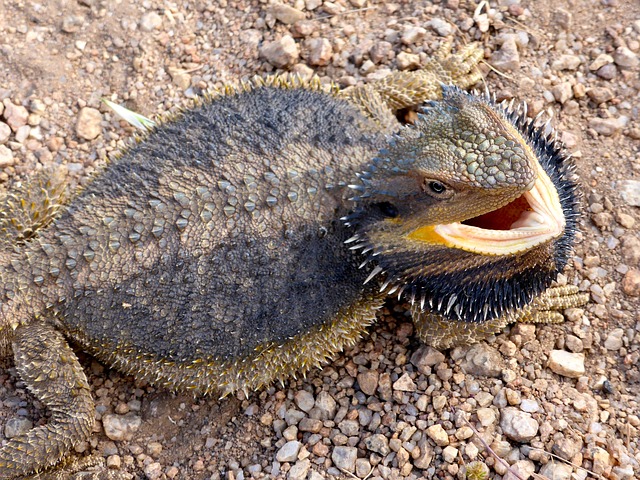
Once your baby dragons reach adulthood, they can be fed on a variety of food items having a healthy mix of crickets, meal worms, pink mice and vegetables. Adult dragons can also be given a special treat in the form of locusts, wax worms, silk worm and a number of other types of worms which are available. Your adult pets also deserve their preys to be dusted with a calcium and vitamin D supplement but they require less calcium than juvenile dragons.
NEVER FEED YOUR BEARDIES ON INSECTS CAUGHT IN YOUR BACKYARD. Doing such a mistake can poison your dragon to an extent that it can be killed. To keep your pets safe, keep them away from wild insects. Once your prey is done with the treat, remove all unconsumed food from the enclosure and clean it.
Fresh water in shallow bowls should also be offered to the dragons with the meals and at times you need to put water in the pet’s snout if they don’t drink it themselves.
To know more about the fruits, vegetables and animal materials that are healthy for your pets, don’t forget to check out “Bearded Dragon Secret Manual”, available at www.beardeddragonsecretmanual.com.
Bringing Home a True Friend
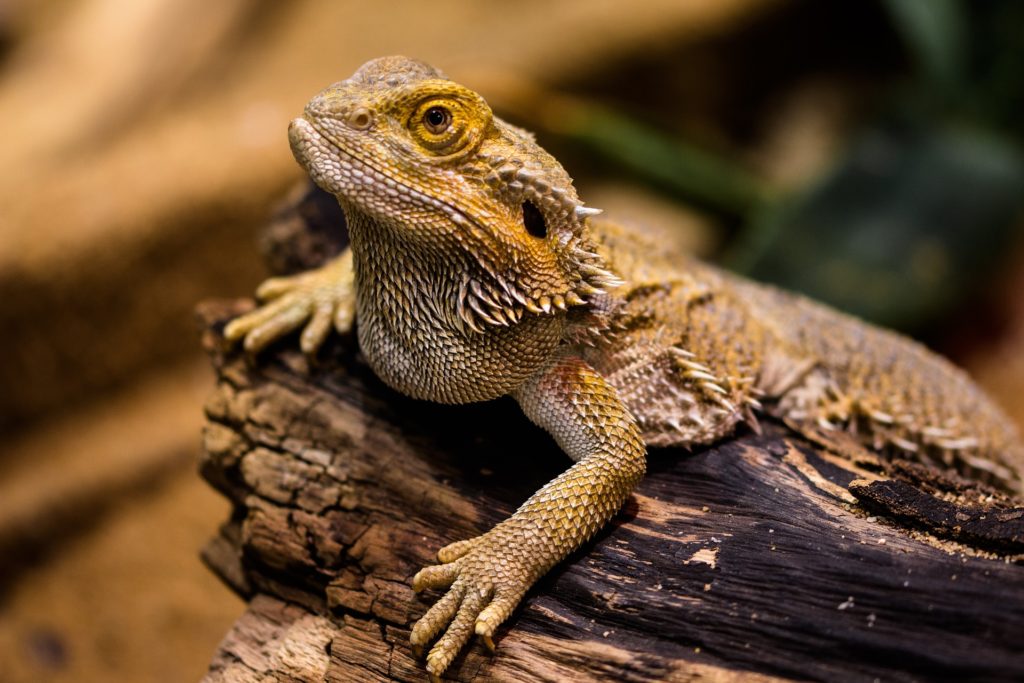
Bearded dragons are cute little creatures that make wonderful pets, so if you have decided to house one at your place, make sure you have all the preparations complete before you bring it home. “Beardies,” as they are fondly referred, have become quite popular as pets recently. They adapt well in families due to their friendly nature especially with the young enthusiasts.
Although bearded dragons require extensive housing considerations, you do not need to worry. You can thoroughly enjoy your experience with these fascinating and friendly lizards with some great housing tips in Bearded Dragon Secret Manual. After reading through this book, you can house your pets in a better habitat.
Advantages of Housing “Beardies”
Bearded dragons can prove to be an excellent choice as pets for a number of reasons. They take up less space meaning that they can easily be housed. Not only are the creatures attractive, they are also available in a number of colors. You don’t need to train dragons to socialize. The moment you bring a bearded dragon home, it tries to adapt to your environment and often this is really quick.
Bearded dragons love to have their shelters or cages placed at a spot where they remain in constant contact with humans. They love to seek owner’s attention so you can place the cage in a suitable place where you spend most of your time. The more your pets sees you, the more committed they become. You will never regret the decision of bringing them home.
Housing Conditions
Aquariums and Tanks
The size of a bearded dragon ranges from 6 to 24 inches with a life span of 5 to 15 years if they are properly cared for. If you bring home a hatchling which is typically less than 10 inches, it can be kept in 20 gallon tank or aquarium for a few months. Remember that these lizards grow fast so you will probably need larger space when your pet grows up.
Adult dragons typically measure 18 to 24 inches and require nothing less than a 50 gallon tank. It is better if you buy a 55 gallon aquarium giving them extra space to flex their muscles and play around. You can always place screen lids over your aquariums but avoid using hard lids made of glass, wood or plexiglass. The use of such materials hinders air circulation and also builds up humidity within the cage. Your pet would definitely not like this environment so is not recommended.
Light, Heat and Temperature Requirements
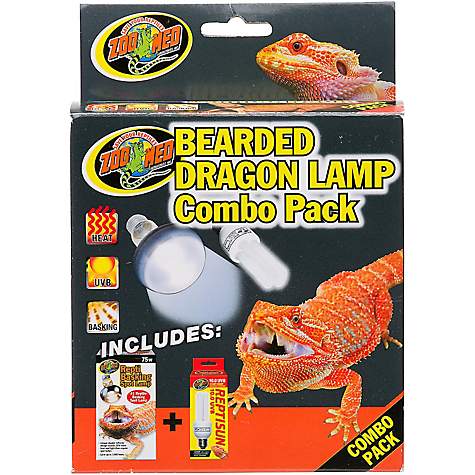
Red dragons love the wild desert environment so are not quite fond of cold temperatures. Heat lamps (Buy Online) are the best source of warmth in the enclosures. Temperature requirement for a juvenile is about 110 Fahrenheit and for adults this drops to 95 Fahrenheit. You can keep a thermostat controller to stay on the safe side and to maintain temperature, preventing injuries to your pet. Lighting can be provided by fluorescent bulbs.
The Enclosure may also contain play sand to give “the desert look”. You should be extremely watchful while placing household plants in your pet’s enclosure. There are about 46 different kinds of deadly plants commonly found at home which can be life threatening for your beardie. Most common ones are Belladonna, Anemone, Amaryllis and Azalea. To know the complete list, you can read through the manual mentioned below.
For more information on housing bearded dragons in the best way, get a copy of “Bearded Dragon Secret Manual”, available at www.beardeddragonsecretmanual.com and spend quality time with your pet.
Bearded Dragon Secrets Manual
These relatively easy to house reptiles from Australia have picked up a special place for themselves in the pet race and are slowly becoming one of the most popular pets for families. Compared to other reptiles, these beardies are friendlier and socialize easily.
As bringing any pet home requires owners to be familiar with choosing, housing, feeding and maintenance tips, this is where “Bearded Dragon Secret Manual”, found at www.beardeddragonsecretmanual.com comes in handy.
It is a comprehensive guide for every “beardie” lover and provides all the required information in an elaborate style. If you still doubt bringing this Australian lizard home, then you should you go through this book and surely you will find many reasons to consider this fascinating creature as your next pet.
The book “Bearded Dragon Secret Manual” covers a complete range of topics to ensure that your pet is not neglected in any way. All of your beardie’s needs are considered in detail and not even the slightest bits of essential information are skipped.
With the help of this manual, you can care for your pets in the best possible way and there will be no room for mistakes. You get to know tips for selecting the best pet which can make a good companion.
As these reptiles are not used to cold climates, you as an owner should be well aware of their housing needs and this manual gives you a detailed description of the arrangements (including enclosures, heat, temperature and light) you need to make.
You can find out the ideal housing conditions which can keep your pet happy and also help it grow well. Remember if you bring a juvenile or baby dragon home, you need to be extra cautious to prevent the risk of accidents and injuries in the enclosures. There are many plants and materials commonly used as substrates which pose a serious threat to your pet and should not be kept in the enclosures.
Caring for bearded dragons is incomplete without discussing favorite snacks and feeding schedules and “Bearded Dragon Secret Manual” is an excellent reference for those interested in keeping dragons at their home. You can have a clear idea of all food items, their quantities, nutritional supplements thus every thing you can feed your pet to make sure it grows well and stays healthy.
The manual also gives an insight of the hazardous food items which should be kept outside the reach of you to prevent illness and injuries. Some pets show abnormal eating behaviors which can be a sign of concern but this guide explains immediate measures that can be taken to prevent future complications.
Raising dragons would also require you to take care of their cleanliness therefore this manual can help you bathe and clean your pet in the right way. It gives an idea of how you should bathe your beardie keeping in mind water temperature and levels so that there are no mishaps.
“Bearded Dragon Secret Manual” clearly mentions what you should NOT do regarding raising your pet along with some new things to give “extra” care to your dragons.
One thing you can be sure about that this guide will be a fun read for all bearded dragon owners. You will be familiar with basic requirements and all common problems associated with caring for bearded dragons. Bearded Dragon Secret Manual found at www.beardeddragonsecretmanual.com is definitely a guide every beardie owner must have!
Learn More About Bearded Dragons
Best UV Light for Bearded Dragons
Bearded Dragon Tank Temperature Guide

